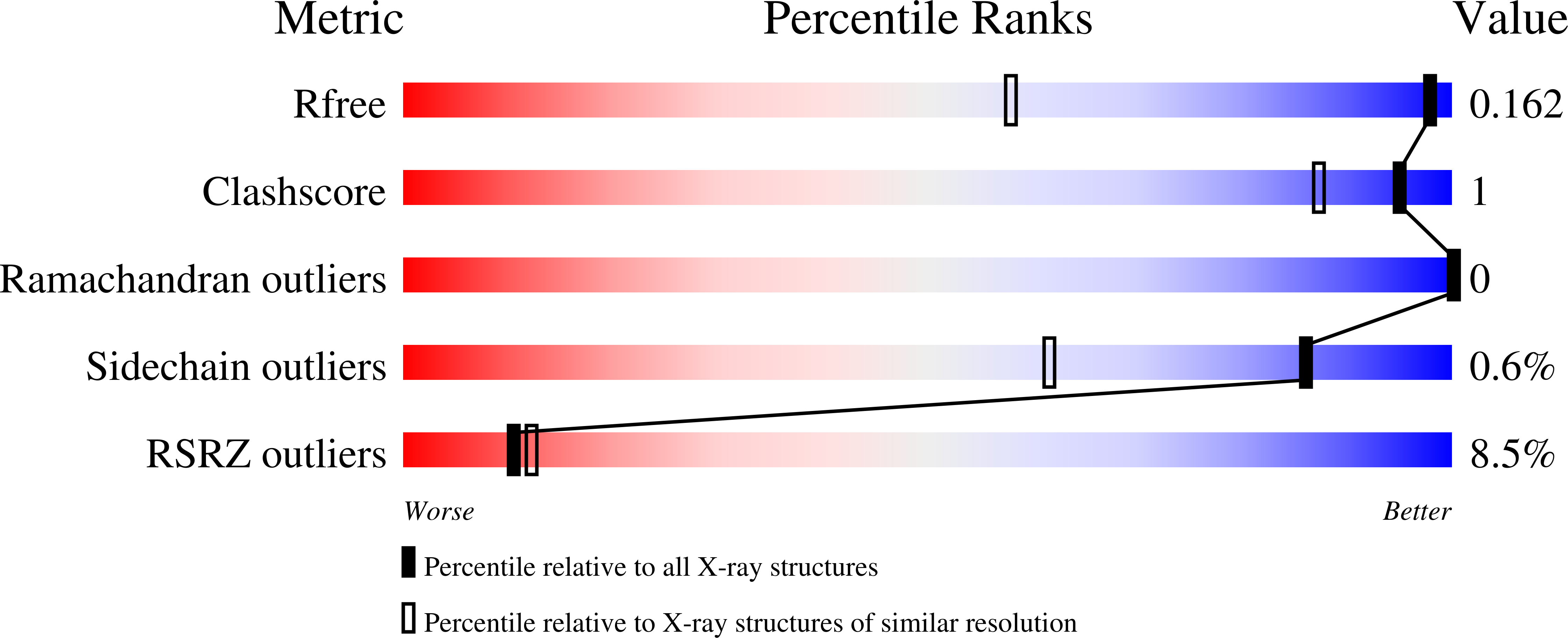Molecular Architecture of 4E-BP Translational Inhibitors Bound to Eif4E.
Peter, D., Igreja, C., Weber, R., Wohlbold, L., Weiler, C., Ebertsch, L., Weichenrieder, O., Izaurralde, E.(2015) Mol Cell 57: 1074
- PubMed: 25702871
- DOI: https://doi.org/10.1016/j.molcel.2015.01.017
- Primary Citation of Related Structures:
4UE8, 4UE9, 4UEA, 4UEB, 4UEC, 4UED - PubMed Abstract:
The eIF4E-binding proteins (4E-BPs) represent a diverse class of translation inhibitors that are often deregulated in cancer cells. 4E-BPs inhibit translation by competing with eIF4G for binding to eIF4E through an interface that consists of canonical and non-canonical eIF4E-binding motifs connected by a linker. The lack of high-resolution structures including the linkers, which contain phosphorylation sites, limits our understanding of how phosphorylation inhibits complex formation. Furthermore, the binding mechanism of the non-canonical motifs is poorly understood. Here, we present structures of human eIF4E bound to 4E-BP1 and fly eIF4E bound to Thor, 4E-T, and eIF4G. These structures reveal architectural elements that are unique to 4E-BPs and provide insight into the consequences of phosphorylation. Guided by these structures, we designed and crystallized a 4E-BP mimic that shows increased repressive activity. Our studies pave the way for the rational design of 4E-BP mimics as therapeutic tools to decrease translation during oncogenic transformation.
Organizational Affiliation:
Department of Biochemistry, Max Planck Institute for Developmental Biology, Spemannstrasse 35, 72076 Tübingen, Germany.



















